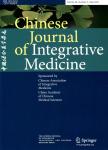Electroacupuncture Alleviates Functional Constipation in Mice by Activating Enteric Glial Cell Autophagy via PI3K/AKT/mTOR Signaling
作者机构:Acupuncture and Tuina SchoolChengdu University of Traditional Chinese MedicineChengdu(610075)China School of Traditional Chinese MedicineJinan UniversityGuangzhou(510632)China
出 版 物:《Chinese Journal of Integrative Medicine》 (中国结合医学杂志(英文版))
年 卷 期:2023年第29卷第5期
页 面:459-469页
核心收录:
学科分类:1007[医学-药学(可授医学、理学学位)] 1005[医学-中医学] 1002[医学-临床医学] 100512[医学-针灸推拿学] 10[医学]
基 金:Supported by the National Natural Science Foundation of China (No.82074554) the Foundation of the Science and Technology Department of Sichuan Province,China (No.2021YJ0197) Chengdu University of Traditional Chinese Medicine Xinglin Scholars Program (No.YXRC2018007)
主 题:electroacupuncture gastrointestinal motility autophagy enteric glial cells Chinese medicine
摘 要:Objective: To investigate autophagy-related mechanisms of electroacupuncture(EA) action in improving gastrointestinal motility in mice with functional constipation(FC). Methods: According to a random number table, the Kunming mice were divided into the normal control, FC and EA groups in Experiment Ⅰ. The autophagy inhibitor 3-methyladenine(3-MA) was used to observe whether it antagonized the effects of EA in Experiment Ⅱ. An FC model was established by diphenoxylate gavage. Then the mice were treated with EA stimulation at Tianshu(ST 25) and Shangjuxu(ST 37) acupoints. The first black stool defecation time, the number, weight, and water content of 8-h feces, and intestinal transit rate were used to assess intestinal transit. Colonic tissues underwent histopathological assessment, and the expressions of autophagy markers microtubuleassociated protein 1 light chain 3(LC3) and Beclin-1 were detected by immunohistochemical staining. The expressions of phosphoinositide 3-kinases(PI3K)-protein kinase B(AKT)-mammalian target of rapamycin(m TOR) signaling pathway members were investigated by Western blot and quantitative reverse transcription-polymerase chain reaction, respectively. The relationship between enteric glial cells(EGCs) and autophagy was observed by confocal immunofluorescence microscopy, localization analysis, and electron microscopy. Results: EA treatment shortened the first black stool defecation time, increased the number, weight, and water content of 8-h feces, and improved the intestinal transit rate in FC mice(P0.01). In terms of a putative autophagy mechanism, EA treatment promoted the expressions of LC3 and Beclin-1 proteins in the colonic tissue of FC mice(P0.05), with glial fibrillary acidic protein(GFAP) and LC3 significantly colocalized. Furthermore, EA promoted colonic autophagy in FC mice by inhibiting PI3K/AKT/m TOR signaling(P0.05 or P0.01). The positive effect of EA on intestinal motility in FC mice was blocked by 3-MA. Conclusion: EA tre



